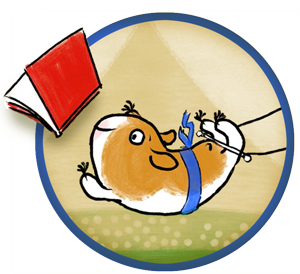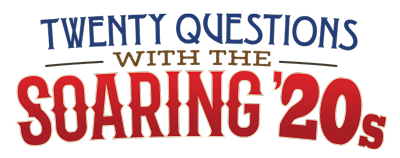By Elisa Boxer and Kjersten Hayes
Welcome back to our series, 20 QUESTIONS!
This is the place where we here at the Soaring ’20s answer questions about our debut picture book process.
We’re one month into 2020 (gasp!), looking ahead to all that awaits us during our debut year.
But we’re also looking back, taking stock of what we wish we’d known before this whole journey began.
Today’s question:
“What’s your best piece of advice for your younger author/illustrator self? “
Rajani LaRocca
Rajani LaRocca, author of the picture book SEVEN GOLDEN RINGS and the middle-grade book MIDSUMMER’S MAYHEM: “Lean into the stuff that makes you weird. It’s also what makes you and your writing interesting! Also, just when you’re thinking of giving up on something is when the breakthrough comes.”
Kjersten Hayes
Kjersten Hayes, author of THE ELEPHANTS’ GUIDE TO HIDE-AND-SEEK: “Please, younger self, stop sabotaging by rarely submitting. It can be just as painful to hide as it is to share. Also, make a fool of yourself more often — boldly saying YES to your adventurous, risky, beautiful efforts, even when they fall horribly short. Those failures are likely the exact opportunities you need to build on to make your work better. Stop being scared of your mistakes.”
Mary Wagley Copp
Mary Wagley Copp, author of WHEREVER I GO: “Keep at it! It is a roller coaster of a ride, and while the lows ARE low, the highs ARE high — and worth working toward. It is okay to feel discouraged, but don’t stay in that place. Get up, dust off, and write!”
Lindsay H. Metcalf
Lindsay H. Metcalf, author of BEATRIX POTTER, SCIENTIST and FARMERS UNITE!, and co-editor of NO VOICE TOO SMALL: “Patience, young Padawan. Don’t submit work that’s not the best thing you’ve ever written. Would you want to make a mediocre book? No. So don’t send mediocre submissions just because you’re tired of futzing with them.”
Kelly Baptist
Kelly Baptist, author of THE ELECTRIC SLIDE AND KAI: “Don’t wait! Don’t let life get in the way of your passion. No matter how busy or complicated life becomes, you MUST make space for writing. Dreams are great, but you have to wake up and work to achieve them. Time doesn’t wait, so you shouldn’t either!”
Hope Lim
Hope Lim, author of I AM A BIRD: “Your best story ideas come from personal experiences, described and retold from your own unique perspective.”
Kirsten W. Larson
Kirsten W. Larson, author of WOOD, WIRE, WINGS: EMMA LILIAN TODD INVENTS AN AIRPLANE: “It’s OK to write what you love. For me, that’s true stories. There is tremendous creativity and craft in writing nonfiction, and lots of challenge too, because you have to stick to the facts.”
Anna Crowley Redding
Anna Crowley Redding, author of RESCUING THE DECLARATION OF INDEPENDENCE: “Keep going. Don’t give up! Go to as many workshops and classes as possible!”
Abi Cushman
Abi Cushman, author/illustrator of SOAKED!: “Put in the work and then put it (and yourself) out there. Doing the work is the only thing you can control in this industry, plus you’ll gradually improve as you build and build upon your skillset over time. Putting yourself and your work out there allows you to develop lots of long-lasting kidlit friendships, in addition to a nice thick skin.”
Qing Zhuang
Qing Zhuang, illustrator of HOW LONG IS FOREVER: “Invest in craft-based art classes and trust your instincts on which medium to focus on. Don’t give yourself so much pressure — You have the right to practice art in a joyful, carefree way as much as anyone else. Take care of your mental and physical health, and try not to take on too much in student loans!
Vicky Fang
Vicky Fang, author of INVENT-A-PET: “Write lots of stuff! Experiment, push, and find great partners.”
Melanie Ellsworth
Melanie Ellsworth, author of CLARINET AND TRUMPET: “Just go for it! And stick with it. Listen to the critiques and edit — a lot! But don’t change your story so much that it loses its heart.”
Susan Kusel
Susan Kusel, author of THE PASSOVER GUEST: “Somebody really is going to want to publish your story based on an obscure Yiddish folktale. It will take about a decade, but don’t give up. One day you’ll see it in print. No kidding.”
Kelly Carey
Kelly Carey, author of HOW LONG IS FOREVER?: “Be patient and trust that the hard work and tentative steps outside of your comfort zone are going to bring you rewards beyond that published book proudly clutched in your hands. You’ll enjoy the long road to publication and you’ll find like-minded friends who will enrich your journey more than you can know.”
Candy Wellins
Candy Wellins, author of SATURDAYS ARE FOR STELLA: “‘Never give in. Never give in. Never, never, never, never…’ It comes from a speech Winston Churchill made during World War II, but it’s the best encouragement I’ve ever heard for doing anything that’s tough. You want to be a writer, but are scared of rejection. Ideas come easily, but you struggle plotting them. Your story has been on submission for months and you still haven’t heard anything. It’s so easy to give in. But if writing is your passion, you have to stick with it and weather all the storms.”
Now . . . over to you! What’s your best piece of advice for your younger author/illustrator self? Let us know in the comments below.























